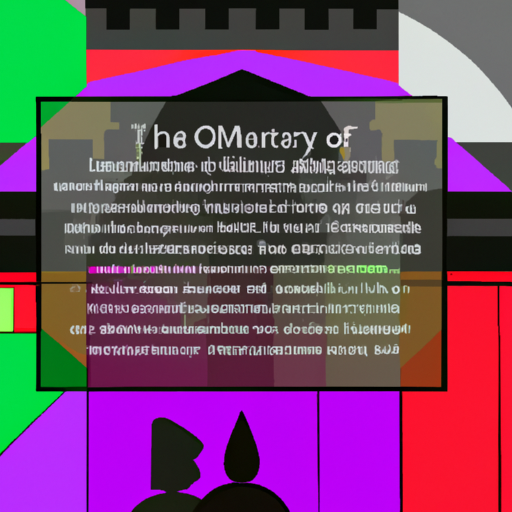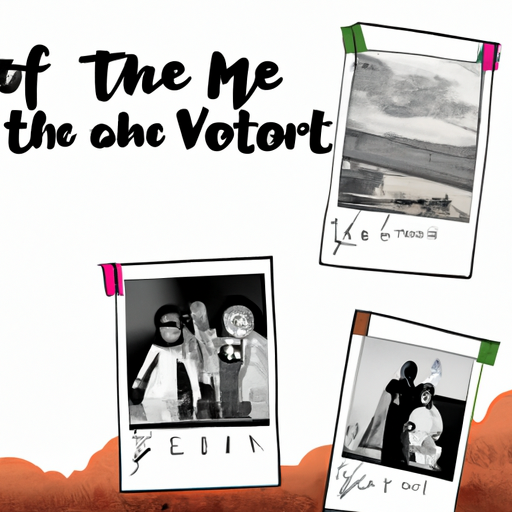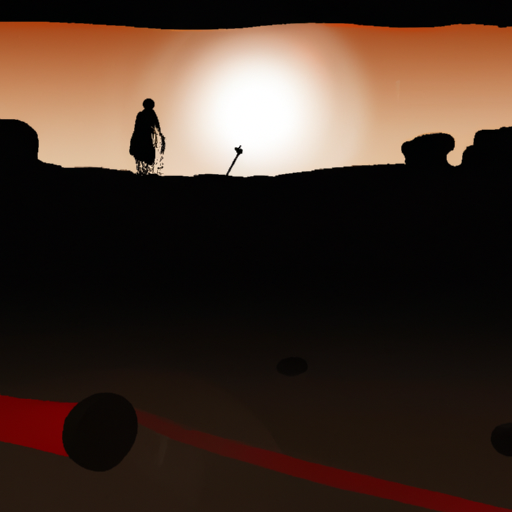A Look at the Worst Punishments in Human History
Unearth the obscure past and unveil the most heinous punishments ever inflicted on humanity! Delve into a world of macabre and uncover the most extreme forms of retribution that have ever been meted out. Uncover a grim reality of torture, torment, and terror that have been felt by countless individuals throughout time. Venture into the unknown and discover the grimmest punishments that have ever taken place.

The past is a dark place, filled with tales of terror and suffering. From the earliest days of civilization to the present, humans have had to experience some of the most torturous punishments ever devised. Executions, floggings, and branding were used to discourage crime or retribution, while in other cases they served as entertainment for the masses. Throughout history, there are numerous examples of cruel punishments inflicted upon criminals or those who violated social norms.
In ancient Rome, criminals could be subjected to crucifixion or thrown into gladiatorial arenas where they would battle against wild animals or other prisoners in a fight for their lives. During the Middle Ages in Europe, offenders were commonly put in stocks and pillories where they were exposed to public humiliation. Burning at the stake or hanging by the neck until dead were also common forms of punishment during this time period. In some cases, victims were subjected to barbaric forms of torture such as breaking on the wheel or being boiled alive.
During colonial times in America and elsewhere around the world, corporal punishment was frequently used by authorities as a form of discipline; whippings and beatings with various objects such as canes or rods were commonplace. Offenders were often sentenced to hard labor in prison colonies or chained up for long periods of time in dungeons and jails.
It’s important that we remember these terrible punishments so that we can learn from our past mistakes and ensure that similar atrocities never occur again.
.
Introduction

Throughout the ages, mankind has devised some of the most extreme forms of punishment imaginable. From physical torture to psychological terror, these punishments have been used to deter crime and punish those found guilty of grave offenses. Cruelties such as crucifixion, burning at the stake, public flogging, waterboarding, branding, mutilation, exile, imprisonment without trial, forced labor camps and execution by beheading or hanging have all been employed in various eras throughout history. The severity of these punishments is a testament to how seriously society has taken transgressions against it.
– History of Torture as a Punishment
For centuries, pain and suffering have been used as a means of punishing criminals or extracting confessions. From the ancient Greeks and Romans to the Middle Ages, various techniques have been employed to inflict agony on victims, ranging from physical methods such as flogging and branding to psychological tactics like sleep deprivation and solitary confinement. Recently, some countries have signed the United Nations Convention Against Torture (CAT), but reports still suggest that torture is being used in certain nations for political purposes or to suppress minority groups. Regardless of its past or present usage, it is clear that torture should never be accepted as an acceptable form of punishment.
– Historical Examples of the Death Penalty
Through the ages, a variety of punishments have been inflicted on those who transgress societal norms. From minor infractions to more serious offenses, the death penalty has been employed as a way to deter people from committing certain crimes and maintain social order. This was evident in ancient societies such as Babylon and Greece, where it was used for treason, homicide and even public drunkenness. In Rome, Julius Caesar’s reign saw an increase in executions of political rivals and dissidents. During medieval times in Europe, it was commonly used by both secular rulers and religious authorities to punish heretics or anyone who challenged established authority or beliefs.
Today, capital punishment is still in effect in some countries but is increasingly being abolished due to its perceived cruelty and lack of effectiveness as a deterrent. As history shows us, justice must be balanced with mercy if it is to be truly effective.
– The Development of Cruel and Unusual Punishments Throughout History
Through the ages, harsh and peculiar punishments have been utilized as a means of inflicting pain and anguish upon those who have broken the laws of society. From ancient times to the present, these methods of punishment have grown increasingly more severe and intricate. This article will delve into the history of cruel and unusual punishments.
In olden civilizations such as Egypt, Greece, and Rome, penalties were often savage in nature. Offenders could be exposed to public humiliation through flogging or branding, while more serious crimes could result in mutilation or execution. In some cases, criminals were even thrown to wild animals or crucified. These types of punishments were designed to be both physically and psychologically damaging.
As time passed on, so did the severity of punishments. During Medieval Europe, accused criminals were routinely subjected to torture in an effort to extract confessions from them. This included devices like the rack, which stretched victims’ limbs until they snapped; the Iron Maiden, which impaled victims with spikes; and boiling water baths that burned off skin. The use of torture continued into the early modern period with inventions such as thumbscrews and scold’s bridles that caused intense agony on those subjected to them.
In recent years, cruel and unusual punishments have become less frequent due to developments in human rights legislation. Nonetheless, certain forms of capital punishment are still practiced in some countries around the world today. These include lethal injection, electrocution, hanging, firing squad, gas chamber, stoning and beheading – all of which can be deemed cruel and unusual by modern standards.
The progression of cruel and unusual punishments throughout history has been a long one – from ancient civilizations subjecting criminals to public humiliation to current executions conducted by governments across the globe. While many nations have abolished these practices due to advancements in human rights legislation, there are still some places where these forms of punishment remain legal today – a reminder that we must remain vigilant against any form of cruelty or injustice within our societies.”
– The Use of Public Humiliation as a Form of Punishment Through History
Throughout the ages, humiliation in public has been an accepted form of penalty. From ancient civilizations such as the Greeks and Romans to medieval times, where people were put in stocks or pilloried for all to see, it has been a commonly used practice. Even during colonial times, minor offences like drunkenness or adultery were met with public shaming – such as having offenders stand in the town square wearing signs declaring their wrongdoings.
Today, some countries still use this method of punishment for lawbreaking; for instance, Saudi Arabia carries out public floggings for certain crimes. In India, those who have committed serious offences may be publicly shamed through blackening their faces or shaving their heads.
However, many human rights organizations now argue that public humiliation goes against basic principles of dignity and respect for individuals and should not be used under any circumstances. Furthermore, there is little evidence that it serves as a deterrent for criminal behaviour; instead of instilling fear in potential offenders, it can actually lead to feelings of shame and anger which could result in further criminal activity.
Therefore, while public humiliation has been used throughout history as a form of penalty for wrongdoers, its efficacy and morality remain questionable at best.
– The Impact of Historical Punishments on Modern Society
Throughout the ages, punishments have been a tool employed by societies to maintain order and enforce laws. Although these harsh methods are no longer used, their influence can still be seen in today’s criminal justice system. From ancient Greece to the Middle Ages and beyond, physical punishments such as exile, flogging and death have been used to ensure citizens followed laws and respected authority. Additionally, public humiliation was often employed as a means of shaming wrongdoers and serving as a warning for others not to commit similar offenses. In modern times, however, public shaming often takes the form of social media campaigns or boycotts rather than physical punishment. Furthermore, religious beliefs have had an immense impact on how we punish people today; with some countries allowing religious authorities to exercise power over criminal justice systems. Thus, it is essential to understand this history in order to effectively address crime prevention in the future.
conclusion

The most extreme of punishments inflicted on mankind through the ages have been diverse and ever-changing. From public shaming to physical agony, even death, these practices have been utilized as a means of instilling fear in populations and keeping them in check. In current times, many states have abolished such intense methods as retribution.
.
Some questions with answers
Q1: What is the worst punishment in human history?
A1: The most severe punishments in human history include death, torture, imprisonment and exile.
Q2: When was the death penalty used as a punishment?
A2: Death has been used as a form of punishment since ancient times, with some of the earliest recorded executions taking place in Egypt around 1650 BC.
Q3: What is one of the oldest forms of torture?
A3: One of the oldest forms of torture is crucifixion, which dates back to Ancient Greece.
Q4: Who was exiled from their homeland?
A4: Throughout history, many people have been exiled from their homelands for various reasons including political dissent or religious persecution.
Q5: Are there any other punishments used throughout history?
A5: Other forms of punishment that have been used throughout history include fines, forced labor and corporal punishment such as whipping or flogging.





